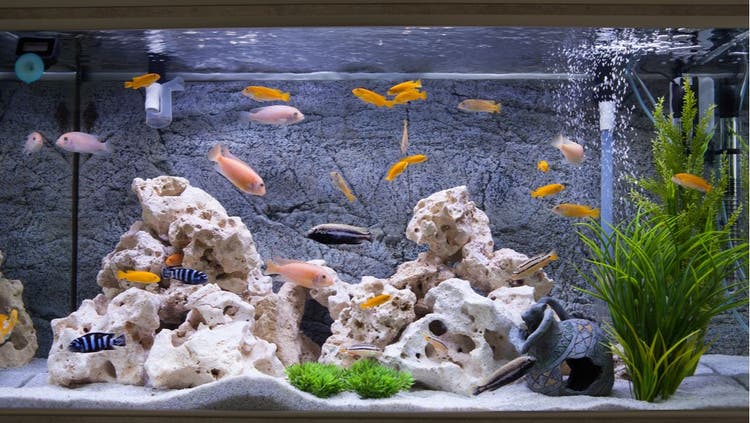
Supersaturation
While not common in the home aquarium, supersaturation disease can occur in the presence of pump, fountain or filter failure. Increased environmental temperatures, as well as excessive aeration, can also contribute to this sometimes fatal condition.
Affected fish may display acute morbidity (illness) and mortality (death). Some fish may have air bubbles under the skin and fins (subcutaneous) and/or inside of the eye (intraocular).
Overaerating an aquarium or pond can result in a condition known commonly as “gas bubble disease.” Gas bubble disease is a result of supersaturation (excess levels) of the water with the gas, nitrogen. Supersaturation occurs whenever the pressure of a gas in the water is higher than the pressure of the same gas in the surrounding atmosphere. When there is this difference between gas pressures, the gas gets pulled too quickly out of the bloodstream, leaving gas bubbles behind. This is what happens to Scuba divers who ascend too quickly and create a big difference in gas pressures, which leads to the diver getting gas bubble formation or the “bends.”
In this situation, the tank water is supersaturated, which means it has more gas than the water can hold. These emboli (air bubbles) can kill the fish, so the situation must be corrected quickly. This problem often occurs when the water temperature is very high (over 90 degrees Fahrenheit) and the aquarist tries to compensate for the low oxygen levels by excessively aerating the aquarium. Making temperature control and aeration adjustments will solve this problem. Cavitating pumps that create turbulent air in the water are a common cause of supersaturation disease.
Mortality may be acute and severe. Surviving fish have a good prognosis once the cause of the problem has been identified and corrected.
Diagnosis
With the help of your veterinarian, you will be able to rule out chlorine toxicity, other water quality disorders and temperature or pH shock.
Supersaturation disease can be difficult to confirm since problems visible to the naked eye (gross lesions) are commonly not present when the fish are found. Gill biopsies and wet mount examination of other organs under the microscope may show gas emboli within the bloodstream. Supersaturation is difficult to diagnose with a water test kit since most kits do not measure dissolved nitrogen. You should consider a diagnosis of supersaturation disease for any acute deaths that cannot be attributed to other water quality disorders or specific pathogens or toxins.
In some cases, your veterinarian may be able to aspirate large subcutaneous air bubbles from your fish.
Home Care
If you observe this condition in your aquarium, try to locate the source of the supersaturated air immediately and correct the problem. Begin by examining the pump and filtration system.
Prevention
Make sure that if you have a submerged pump, there is an adequate water level in the reservoir or sump from which the pump draws its water. A sucking or slurping sound may indicate that the pump is pulling air in with the water and should serve as a warning sign for gas bubble disease.